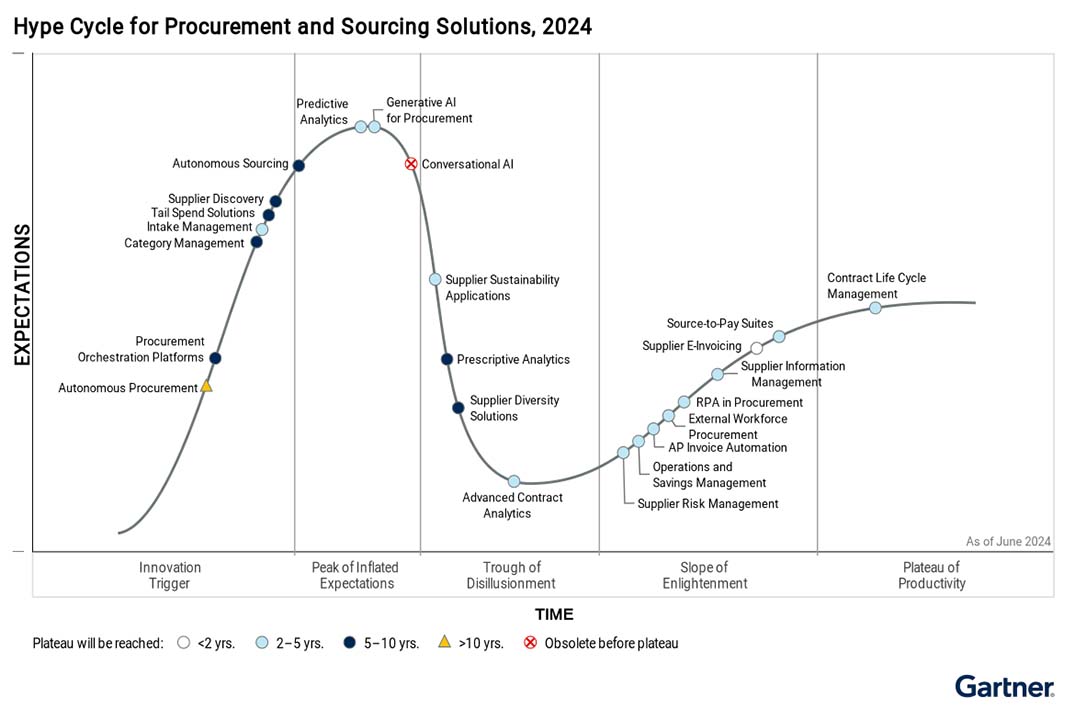Generative AI (GenAI) for procurement is at the Peak of Inflated Expectations, according to Gartner’s 2024 Hype Cycle for Procurement and Sourcing Solutions.
Rapid adoption and a multitude of credible use cases will quickly move GenAI to the Plateau of Productivity within two years.
“GenAI can already enhance many different workflows in procurement and 73% of procurement leaders at the start of the year expected to adopt the technology by the end 2024,” says Kaitlynn Sommers, senior director analyst with Gartner’s Supply Chain Practice.
“This level of adoption, along with promising use cases, such as contract management, means GenAI will rapidly move through the Hype Cycle and reach the Plateau of Productivity at a faster rate than is typical for most emerging technologies in procurement.”
Gartner’s Hype Cycle for Procurement and Sourcing Solutions evaluated more than 20 technologies impacting the procurement landscape in 2024.
This year, many core procurement technologies continued to mature and increase in adoption across organisations.
Additionally, a set of emerging, AI-driven technologies neared the Peak of Inflated Expectations, including GenAI, autonomous sourcing, predictive analytics and conversational AI.

Source: Gartner (July 2024)
In the last 12 months, GenAI use case availability has expanded greatly, with more capabilities being added by vendors across the sourcing and procurement landscape every month. Early prominent use cases include contract management, sourcing and supplier management. Additional expected use cases include supporting supplier performance management, P2P and analytics.
Procurement technology vendors are integrating third-party large language models (LLMs) to provide more affordable access to GenAI capabilities in line with digital process support. These LLMs can adapt to provide recommendations and support based on the organization’s data and an individual’s procurement role, such as category manager or buyer.
“The window for building competitive advantage through early adoption of GenAI in procurement is narrowing,” says Sommers. “Despite this, procurement technology leaders should remain aware of the obstacles to successful implementations, notably in the areas of data quality and integration of GenAI with their current systems.”
Sommers recommends that the best way to solve for these challenges is to launch targeted use-case pilots that will help clarify what capabilities can be scaled, while also monitoring developments from current vendors for opportunities to utilise GenAI without the need to build proprietary infrastructure from scratch.

